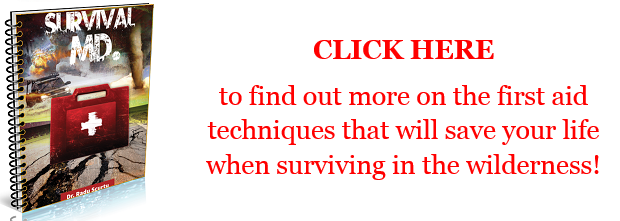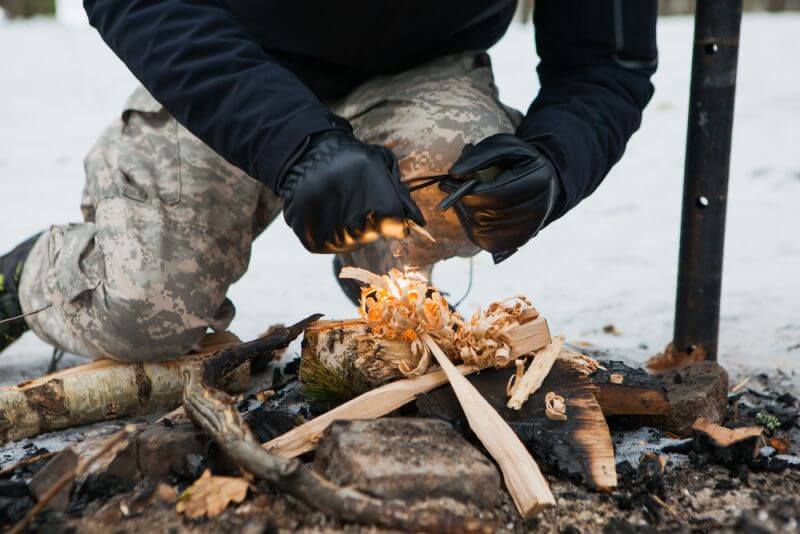Let’s face it—pandemics aren’t exactly a new thing. From the Black Death to the Spanish Flu, history is littered with outbreaks that have reshaped societies. But here’s the kicker: COVID-19 wasn’t just a wake-up call; it was a full-blown alarm bell.
And if you’re a prepper or survivalist, you’re probably wondering, “Is this the new normal? Are we staring down the barrel of more pandemics in the near future?”
The short answer? Probably. But let’s break it down.
The Perfect Storm: Why Pandemics Are on the Rise
The problem we face today is that the conditions for pandemics have never been more favorable. It’s like Mother Nature decided to throw a party, and every virus on the block got an invite. Here’s why I fear more pandemics will emerge in the near future:
Globalization: Sure, it’s great that you can order a handmade rug from Morocco and have it delivered to your doorstep in a week. It’s great that you can board a plane and visit every country you can think of with just a few simple online clicks. But that same interconnections that govern our modern world means a virus can hitch a ride on a plane and spread across continents faster than you can say “quarantine.”
Urbanization: Cities are growing at breakneck speed, and with that comes closer human contact. More people in tighter spaces? That’s basically a buffet for pathogens. Not to mention that immigration is a big problem in most developed countries nowadays and people are bringing all sorts of diseases with their cultural enrichment ways. Their bodies might be used to some of these diseases, but yours sure isn’t.
Climate change: Call it what you like, believe in it or not, but one thing is certain. You can’t ignore the facts. It’s already noticeable how intense natural disasters are becoming and how rising temperatures and shifting ecosystems are pushing animals—and the diseases they carry—into new areas. Ever heard of zoonotic diseases? That’s when a virus jumps from animals to humans. And guess what? It’s happening more often now than ever before.
Deforestation and habitat destruction: When we bulldoze forests, we’re not just displacing wildlife; we’re disrupting ecosystems that have kept certain diseases in check for centuries. It’s like poking a beehive and being surprised when the bees come out swinging.
The Role of Technology: A Blessing and a Curse
Here’s the thing: technology is both our greatest weapon and our Achilles’ heel. On one hand, advancements in medicine and vaccine development have saved countless lives. The speed at which COVID-19 vaccines were developed was nothing short of amazing (regardless of the debate behind the scope of these vaccines). But on the other hand, our reliance on technology has created vulnerabilities.
Take factory farming, for example. Massive industrial farms are breeding grounds for disease. Thousands of animals packed into tight spaces? That’s a recipe for disaster. And let’s not forget about bioterrorism. As technology becomes more accessible, the risk of engineered pathogens increases. It’s a scary thought, but it’s one we can’t afford to ignore.
What History Tells Us
History doesn’t repeat itself in the form simple folks believe, but it sure does rhyme. If we look back at the last century, pandemics have been popping up with unsettling regularity. The 1918 flu pandemic, HIV/AIDS in the 1980s, SARS in 2003, H1N1 in 2009, COVID-19 in 2019, and now seems like bird flu could be the newest thing we have to worry about. The gaps between these outbreaks are shrinking, and the severity is increasing.
But here’s the twist: us preppers, are better equipped to handle pandemics now than ever before. We have better tools, better knowledge, and better communication. The question is, will we use them effectively? Or will we fall into the same traps of complacency and misinformation?
The New Threats: Bird Flu and Other Emerging Viruses
Now, let’s talk about the new kids on the block—viruses like the bird flu (H5N1 and H5N8) that have been making headlines. These aren’t just hypothetical threats; they’re already here, and they’re causing real problems.
Bird Flu on U.S. Soil: A Growing Concern
You might have heard about the recent outbreaks of bird flu in the U.S. In early 2022, the H5N1 strain was detected in wild birds and commercial poultry flocks across multiple states. This isn’t just a problem for farmers; it’s a potential public health crisis. Why? Because bird flu has a nasty habit of jumping species.
Here’s the deal: while bird flu primarily affects birds, it can—and has—infected humans. The mortality rate for humans infected with H5N1 is alarmingly high, around 60%. That’s six times higher than COVID-19 at its peak. And while human-to-human transmission has been rare so far, viruses are notorious for mutating. If H5N1 mutates to spread more easily among humans, we could be looking at another pandemic.
Other Emerging Viruses to Watch
Bird flu isn’t the only virus keeping scientists up at night. There’s also:
- Nipah virus: Spread by fruit bats, this virus has a fatality rate of up to 75%. Outbreaks have been limited to South Asia so far, but with global travel, it’s only a matter of time before it spreads further.
- MERS (Middle East Respiratory Syndrome): Another coronavirus, MERS has a fatality rate of about 35%. It’s primarily spread through contact with camels, but human-to-human transmission has occurred in healthcare settings.
- Disease X: This is the term the World Health Organization uses to describe a hypothetical, unknown pathogen that could cause a future epidemic. It’s a reminder that the next big threat could come out of nowhere.
How Do We Stay Ahead of the Curve?
If you’re a prepper or survivalist, you’re already thinking about the worst-case scenario. But pandemics require a unique approach. It’s not just about stockpiling food and water; it’s about staying informed, staying healthy, and staying connected. Here are a few tips to keep in mind:
Build a pandemic-specific kit. Think masks, gloves, hand sanitizer, and disinfectants. And don’t forget about prescription medications and over-the-counter remedies. I’ve also written on many occasions that even plants can help you clean and disinfect your home. Discover if there are “soap plants” growing in your region and how to harvest and use them.
Stay informed, but don’t panic. Reliable sources like the CDC and WHO are your best friends. Avoid falling down the rabbit hole of conspiracy theories and misinformation. Our country has a lot of enemies and they learned a while ago that spreading misinformation can weaken communities long before the virus can take its chance.
Focus on health and immunity. A strong immune system is your first line of defense. Eat well, exercise, and get enough sleep. It sounds simple, but it’s incredibly effective. How about improving your diet with fresh and nutritious food that you can grow yourself or buy from safe sources? There are so many medicinal plants growing in this country that can help your immune system that it’s impossible to not find any if you do a little bit of research.
Plan for isolation. If another pandemic hits, you might need to hunker down for weeks or even months. Make sure you have a plan for staying mentally and physically healthy during extended periods of isolation. Resources and gear are not the only thing you should be concerned about and you need to figure out how you can keep a clear head and keep everyone around you safe and sane.
Consider livestock and pets. If you’re raising animals, be aware of the risks posed by diseases like bird flu. Implement biosecurity measures to protect your flock or herd. You should be aware that you can be exposed to these viruses if you get in contact with sick animals and you don’t want to become patient zero.
The Silver Lining: Lessons Learned from COVID-19
Let’s be honest—COVID-19 was a nightmare. But it also taught us some valuable lessons. For one, it showed us the importance of preparedness. Countries that acted quickly and decisively fared much better than those that dragged their feet. It also highlighted the need for global cooperation. Viruses don’t care about borders, and neither should we.
Another big takeaway? The power of preparedness was in the spotlight and not in a bad way like it was before. For us, it was a reminder that, even in the face of overwhelming odds, we have the tools to fight back. I don’t know of any serious prepper who had to wait in line to get toilet paper or other basic items. Sure, there were those who went out with suits and masks to test the waters, but they were just showing off.
So, Should We Expect More Pandemics?
The truth is, we’re living in a world that’s primed for pandemics. The factors that contribute to outbreaks—globalization, urbanization, climate change—aren’t going away anytime soon. But that doesn’t mean we’re powerless. By staying informed, staying prepared, and staying vigilant, we can reduce the risk and mitigate the impact.
Here’s the bottom line: pandemics are inevitable, but they’re not insurmountable. The key is to learn from the past, adapt to the present, and prepare for the future. And if there’s one thing preppers and survivalists know how to do, it’s prepare.
So, what’s your plan? Are you ready for the next big outbreak? Because one thing’s for sure—it’s not a matter of if, but when.
If your “activities” include emergency preparedness, you’ve probably noticed by now that the future is more uncertain than ever. Even so, that doesn’t mean we have to face it unprepared. Whether you’re a seasoned prepper or just starting out, the best defense is a good offense. Stay sharp, stay informed, and stay ready. After all, the next pandemic could be just around the corner.










Frank C | April 3, 2025
|
You forgot one. . . Man-Made Viruses. It was rumored that HIV was created and released in third world countries. What they learned was it traveled too quickly, worldwide. Then here comes Covid, a limited focused virus.
Now in movies, such as “the Kingsmen” and “Hobbs & Shaw”, they’ve creating focused viruses aimed at specific DNA and types of people (old and the infirm). Why? Even this is explained in ‘the Kingsmen’, Samual Jackson explained it quite well in the movie.
When human body gets a Cold (aka: virus) the body gets a fever (the body raising its core temperature) to kill the virus. Global Warming works the same way. . . Global Warming is the fever (our host is our planet), and the human population is the virus. A culling is the only way to reduce the population.
Close to, if not more than 8 billion people are alive on this planet; resources already dwindling and over 10,000 species of animals have already gone
extinct; and when our population gets close to 9 billion, this planet will no longer be able to support life. When do you think, someone with the resources would get the idea and try a virus to start culling the population?
Ronald H Levine | April 10, 2025
|
Regarding: “… conditions for pandemics have never been more favorable.”
That will become much worse because in the harsh times to come, when the population doesn’t have food, their immune systems can’t function without nutrition and combined with hospitals and doctors unavailable by either being without power and water, overwhelmed, looted, succumbing themselves or otherwise not functional.
In the harsh times to come, the population becomes very vulnerable to disease and it quickly spreads.
Here, I share my personal preparedness for disease, yet it isn’t and can’t be a recommendation for others. I will do nothing and have zero personal concern for rapidly spreading diseases. Though, I certainly have a plethora of healthy foods which is needed to maintain a healthy immune system, I have food storage anyway for all of the usual other reasons, so I haven’t done that necessary for disease spread concerns because I’m simply not vulnerable. I haven’t had a cold nor flu for thirty-seven years! My immune system is simply that effective.
Randall Brown | April 11, 2025
|
If you’re really concerned about getting sick from a bacterial, viral or fungal infection, then read up on what oleuropein or olive leaf extract or capsules will do to protect you. I’m serious. This info has been suppressed for a long time. Check it out and do your homework.